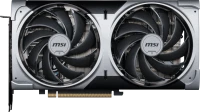Radeon RX 5600 XT: Tested in 20 games
We independently test the products and technologies that we recommend.

And now let's see what this newcomer looks like and what he is capable of in action.
 |
The AMD Navi 10 graphics chip used in the Radeon RX 5600 XT shares the configuration of the Radeon RX 5700 GPU for the most part: 2304 RDNA Stream Processors, 144 Texture Units (TMUs), and 64 Render Units (ROPs). The key difference is in the video buffer. The Radeon RX 5600 XT is content with six gigabytes of GDDR6 connected to the core via a 192-bit bus.
 |
The operating frequencies of the Navi 10 GPU in the Radeon RX 5600 XT are officially in the range from 1130 to 1560 MHz, but here AMD partners have room to manoeuvre. For example, the Asus version is overclocked to 1640 MHz from the factory. The same can be said about the effective video memory frequency of 12 GHz.
For example, the core of the model from Sapphire operates at 1615/1750 MHz (Game/Boost Clock), and 6 GB of GDDR6 video memory is characterized by an effective speed of 14 GHz.
 |
If we talk about the frequency potential of the Radeon RX 5600 XT, then everything will depend on the factory overclocking of the graphics card. In some cases, manufacturers have already “squeezed out all the megahertz” from Navi 10 and GDDR6 chips, while in others they have left a good margin for manual overclocking. Anyway, the Radeon RX 5600 XT graphics cards show themselves quite well as a rival to the GeForce RTX 2060, stepping on the heels of the Radeon RX 5700.
Consider the novelty in the modification from Gigabyte.

It is based on the same Navi 10 processor as the older brothers RX 5700 and 5700 XT. Usually, in this case, the manufacturer disables some of the functional blocks from the "kids" in order to reduce performance and not compete with themselves. However, engineers approached the RX 5600 XT from an unusual angle and cut it to a minimum, so the number of functional blocks in the new product is the same: the processor contains 2304 calculators, 144 texture modules and 64 rasterizers. But the memory bus was cut from 256 to 192 bits. This allows us to hope for a good overclocking potential like the older models.
The model is equipped with a proprietary cooling system Windforce 3X with a massive radiator block and three coolers. Gigabyte Radeon RX 5600 XT supports hybrid cooling mode, stopping the fans at minimal load. Under gaming load, the GPU warmed up to 64 degrees, the noise level was slightly below normal. At light loads, the coolers went into a passive, almost silent mode.
The most interesting thing concerns the production capacity of the card. Due to the general rush, AMD rolled out BIOS updates very late, which significantly increase the power of the card. If in normal mode it gives out a maximum of 1620 MHz for the core, then after flashing to BIOS F2, the Game Boost frequency can rise to 1670 MHz, and the peak Boost Clock to 1750 MHz. Moreover, the effective memory frequency will rise from 12,000 to 14,000 MHz. True, and power consumption will change from 150 watts to 180 watts. The new firmware gave a good performance boost of 8 – 10%, however, in some projects, the core frequency jumped a lot, so it's better to wait for a later stable version of the firmware.
The test stand is available in the list at the link :
- Motherboard — Gigabyte X570 AORUS ELITE ;
- Processor — AMD Ryzen 5 Matisse 3600 BOX Price from 2 499 up to 3 769 ₴;
- Cooling system — ID-COOLING Auraflow X 240 ;
- RAM — HyperX Fury Black DDR4 2x8Gb HX432C16FB3K2/16 ;
- SSD drive for the system — Gigabyte M.2 NVMe SSD GP-GSM2NE3128GNTD 128 GB ;
- Graphics card — Gigabyte Radeon RX 5500 XT GAMING OC 8G ;
- Drive for games — WD Blue WD30EZRZ 3 TB 64/5400 ;
- Power Supply — Chieftec Photon Gold GDP-650C-RGB ;
- Frame — Fractal Design Define C black .
Test results
To test the new card and compare it with the GeForce RTX 2060, we chose a pack of the most popular games, some of which can be called relatively undemanding, and the other part are real monsters.
The graphs show not the maximum, but the average FPS value.
 |
 |
 |
 |
As you can see, in most games they are almost on a par, and the leadership of the Radeon card rarely exceeds 2 FPS. Of course, there are games like Destiny or Battlefield 1 that have quite noticeable and chaotic spread between maps, but these are rather exceptions to the rule due to optimization.
Generally speaking, both cards at Ultra and Full HD settings provide the most comfortable gaming experience. And, with a serious margin. Only "monsters" like Metro Exodus and Red Dead Redemption lower the FPS counter below 60. If we talk about increasing the resolution to UHD (3440x1440 pixels), then we have to make compromises, turn off resource-intensive graphics options and dance between medium and high graphics settings. Well, in 4K it makes no sense to climb, for this you need a card one level higher.
Summary
 |
The decisive factor when choosing a graphics card is always the price. By the end of January 2020, the RX 5600 XT has not yet reached the shelves of east european stores, but it is already known that in the west the price starts at $279. The RTX 2060 in our stores will cost an average of $350, apparently due to the fact that east european retailers did not have time to reduce prices to the recommended $299. Closer to spring, when prices settle down, then it will be clear who is the winner in this pair. On the side of Radeon is a potential firmware update that promises an additional 8-10% power, while the card from NVIDIA boasts hardware ray tracing.
Just be careful when choosing the RX 5600 XT and be sure to ask the seller about updating the BIOS. The fact is that due to the rush, some manufacturers like Gigabyte managed to update the firmware, others remain silent on this matter. Therefore, there is a chance to buy a “simple” non-overclocked version for the same money.
Articles, reviews, useful tips
All materials






























